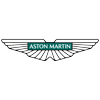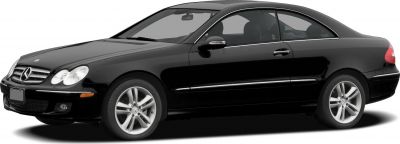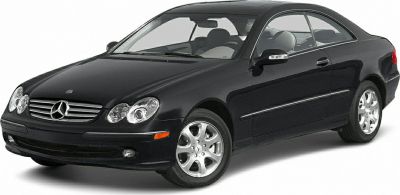 1965 Aston Martin DB6 Dimensions, Size & Specs
1965 Aston Martin DB6 Dimensions, Size & SpecsMeasurements of the 1965 Aston Martin DB6, engineered for optimal performance and comfort
| Dimensions | |
|---|---|
| Length: | 4620 mm181.9 in15.2 ft |
| Width: | 1680 mm66.1 in5.5 ft |
| Height: | 1320 mm52.0 in4.3 ft |
| Ground Clearance: | 160 mm6.3 in0.5 ft |
| Weight Specifications | |
| Curb Weight: | 1474 kg3250 lbs |
The Aston Martin DB6, produced between 1965 and 1969, is a quintessential British grand tourer coupe that builds upon the legacy of its predecessor, the DB5. Measuring 4620 mm (181.9 inches) in length, 1680 mm (66.1 inches) in width, and 1320 mm (51.9 inches) in height, the DB6 presents a sleek yet slightly larger and more aerodynamic profile compared to the earlier DB models. With a curb weight of 1474 kg (3,248 lbs), it balances a relatively lightweight frame with robust construction, offering both performance and refinement. The vehicle’s ground clearance is 160 mm (6.3 inches), which provides a suitable stance for the grand touring experience while maintaining the low-slung sports car aesthetics typical of Aston Martin's styling ethos during the mid-1960s. The DB6’s dimensions allowed for improved interior space and comfort over previous iterations, making it practical for long-distance drives, yet compact enough to retain the agility and handling characteristics expected from a classic Aston Martin coupe. Recognized for its distinctive design details such as the Kamm tail rear end, the DB6 also introduced enhancements for aerodynamics and safety. This elegant British coupe remains a sought-after classic, representing a fine balance between luxury, performance, and timeless design.
Discover the standout features that make the 1965 Aston Martin DB6 a leader in its class
Have a question? Please check our knowledgebase first.
The Aston Martin DB6, produced between 1965 and 1969, measures 4620 mm (181.9 inches) in length, 1680 mm (66.1 inches) in width, and stands 1320 mm (51.97 inches) in height. These dimensions reflect the car’s classic grand tourer profile, balancing sleekness with presence on the road.
The Aston Martin DB6 has a curb weight of approximately 1474 kg (3,248 lbs). This relatively lightweight structure combined with its powerful engine enables brisk acceleration and nimble handling. The weight distribution and moderate mass contribute to a balanced ride, maintaining both comfort and sporty dynamics expected from a grand tourer of its era.
The Aston Martin DB6 offers a ground clearance of 160 mm (6.3 inches). This moderate ride height allows the car to handle well on typical roads and cruising conditions, but it’s not designed for rough terrain or steep obstacles. The clearance supports a low center of gravity, enhancing stability and cornering performance while maintaining adequate practicality for everyday use.
Yes, the Aston Martin DB6 fits comfortably into a standard garage. With a length of 4620 mm (181.9 inches) and width of 1680 mm (66.1 inches), it is slightly longer and somewhat wider than many modern compact cars, but still within the spatial limits of most residential garages. Owners should ensure sufficient space for opening doors and maneuvering, but the DB6’s classic coupe size respects common garage dimensions.
Compared to its predecessor, the Aston Martin DB5, the DB6 is slightly larger. The DB6 measures 4620 mm in length versus approximately 4570 mm for the DB5, making it about 50 mm (2 inches) longer. The width is similar, but the DB6 features more pronounced aerodynamic styling and an extended tail for improved luggage capacity and stability. These dimensional changes offer enhanced practicality without compromising the elegant proportions of the original.
When compared with similar mid-1960s grand tourers, like the Jaguar E-Type Series 1 and Ferrari 275 GTB, the Aston Martin DB6 is comparable in length and width but stands out by featuring a slightly taller profile and larger overall footprint. For example, the E-Type measures about 4380 mm in length and 1635 mm in width, making the DB6 visibly more spacious especially in passenger comfort and luggage capacity. The DB6 merges classic British styling with practical dimensions suitable for touring.
Though exact interior dimensions for the Aston Martin DB6 are scarce, the car is designed as a 2+2 coupe offering two front seats and smaller rear seats. The rear space is more suited to occasional passengers or luggage, emphasizing grand touring rather than full rear passenger comfort. The cabin features a driver-focused layout with ample headroom and legroom in front, providing a balance of comfort and sporty engagement typical of luxury GT cars of the 1960s.
The Aston Martin DB6 improved on its predecessor by incorporating an extended rear end which increased luggage space. This 'fastback' style tail design provided a significantly larger boot capacity than the DB5, making longer trips and touring more feasible. Exact volume figures vary, but this modification was purposefully engineered to suit buyers who needed more storage without sacrificing the car’s elegant silhouette.
The DB6's ride height of 160 mm (6.3 inches) is considered low, contributing to a lowered center of gravity which improves handling characteristics such as cornering stability and road grip. While this enhances sportiness and driver engagement, it may reduce comfort on uneven surfaces or speed bumps, requiring careful driving over obstacles. For a 1960s GT, this height is a well-balanced compromise between dynamic performance and daily drivability.
The Aston Martin DB6 introduced significant design innovations to improve aerodynamic efficiency, including an extended Kamm tail which reduced drag and lifted high-speed stability. The car also featured a wider rear track than previous models, enhancing road grip and cornering. These size-related design cues allowed the DB6 to maintain elegant proportions while improving performance and practicality. Its proportions emphasize sleekness blended with the sturdiness required of a high-performance grand tourer.
Discover similar sized cars.

| Production: | 2005-2009 |
|---|---|
| Model Year: | 2005 |
| Length: | 4643-4657 mm182.8-183.3 in |
| Width: | 1991 mm78.4 in |
| Height: | 1365-1415 mm53.7-55.7 in |

| Production: | 2002-2005 |
|---|---|
| Model Year: | 2002 |
| Length: | 4638-4650 mm182.6-183.1 in |
| Width: | 1991 mm78.4 in |
| Height: | 1360-1415 mm53.5-55.7 in |
